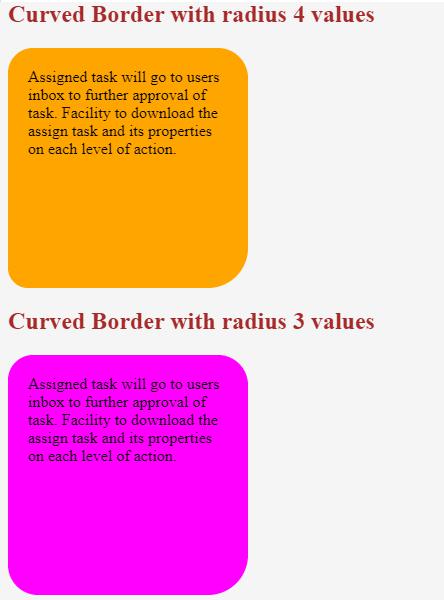

borderTopRightRadius : This is used to make only Top Right Side corners rounded on Image, View and all components. We draw an (inner) rectangle around the widget that we want to have bordered. borderTopLeftRadius : This is used to make only Top Left Side corners rounded in Image and View or any other component style.This is most commonly used to remove a border radius that was applied at a smaller breakpoint. Use t.roundedNone to remove an existing border radius from an element.
BORDER RADIUS FOR ONE SIDE FULL
If you apply the same logic to the full eight value border-radius syntax, you can create a shape that looks a little. Utilities for controlling the border radius of an element. You get a circle because both values defining one side add up to 100 (50 + 50 100) and there is no straight line left, that reminds you of the original square.


In order to draw a border with a gradient, we need at least two pieces of information: the Gradient itself (containing information like the colors and how they are drawn) and the stroke width But remember the circles you create with border-radius: 50.Let’s start by implementing a CustomPainter, the one that actually draws the border.īut first, let’s think a moment what this class should do: In addition to the border-radius property, you. This will get a little bit more complicated, but no worries, I will go through it step by step. Correct answer - A car travels in a circular path of radius 7km, at 44Kmph, for one and half hour. Second value - Simultaneously sets the radius for the top right and bottom left corners of the block. Okay, let’s take the next step: instead of just having a single-colored border around a widget, we proceed to draw a gradient around it. You change, add, or remove these by editing the theme.borderWidth section of your Tailwind config. Using the real border, you will have an undesirable visual jump from layout shift since the border will briefly increase the dimensions in those states.Simple text widget surrounded by stroke border Gradient border By default, Tailwind provides five border-width utilities, and the same number of utilities per side (horizontal, vertical, top, right, bottom, and left). The elements border can be added or removed by using additive and subtractive utilities of border as shown below. Note that your padding will have to be larger than the border-width to prevent overlap of the text content.Īlternatively, perhaps you want to add a border on :hover or :focus. Border utility provides style, color and radius of an elements border. If your design requires another border on a different side of the shape, add a separate Inner shadow on the same shape. Finally change the colour to 100 opacity or whatever your design requires and you have a solid single border. A common case of the real border becoming an issue is when providing styles for both bordered and non-bordered buttons, and the scenario of them lining up next to each other.Ī typical solution is usually increasing the non-bordered button dimensions equal to the border-width.Īn alternate solution with our new knowledge is to use box-shadow along with the inset keyword to place the pseudo border visually inside the button: So for a border width of 10, change the number 1 or -1 to 10 or -10.


 0 kommentar(er)
0 kommentar(er)
